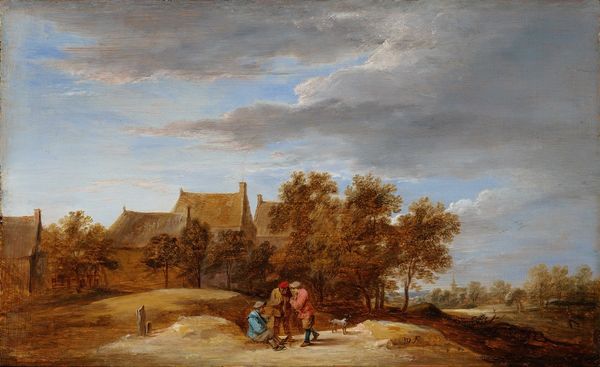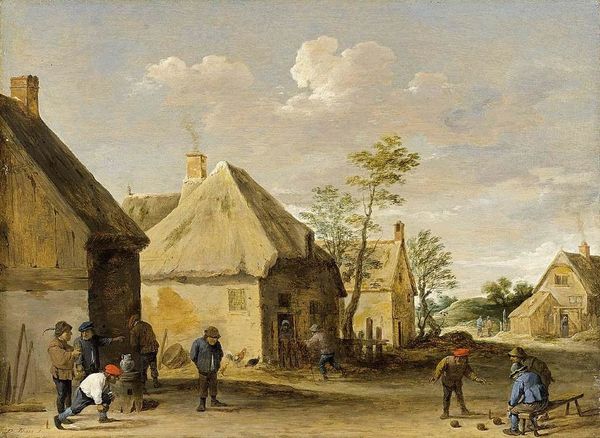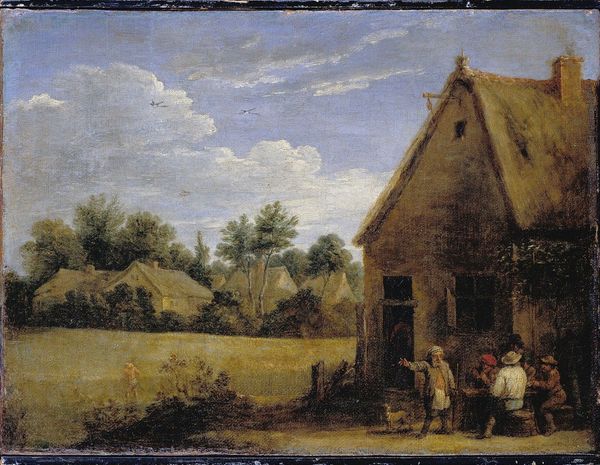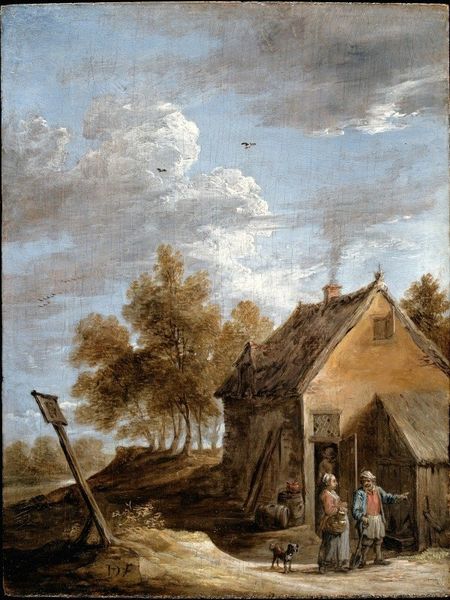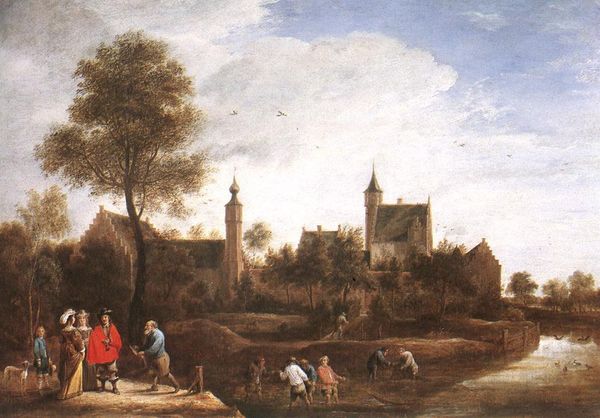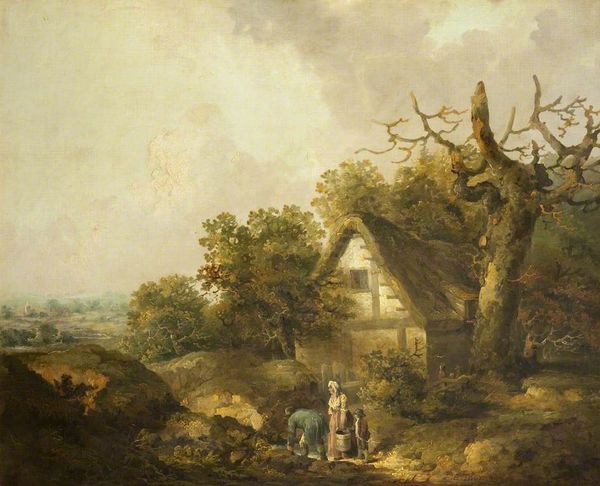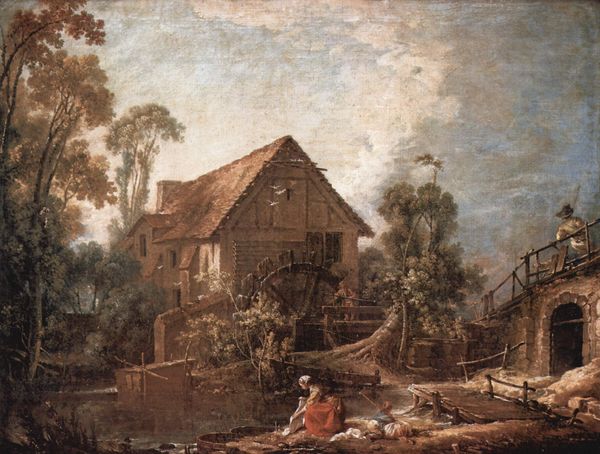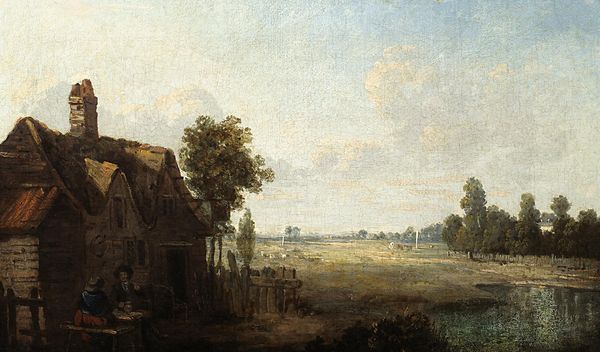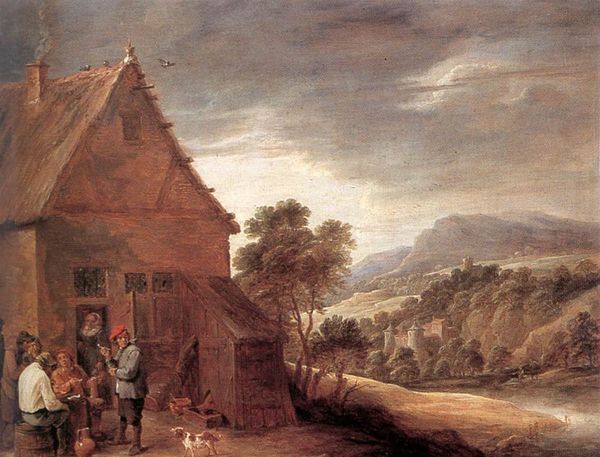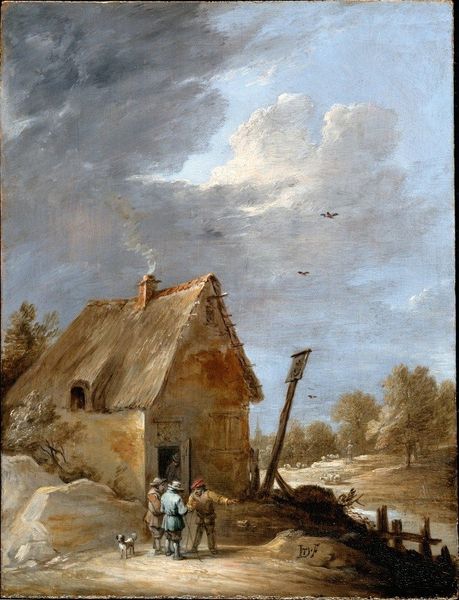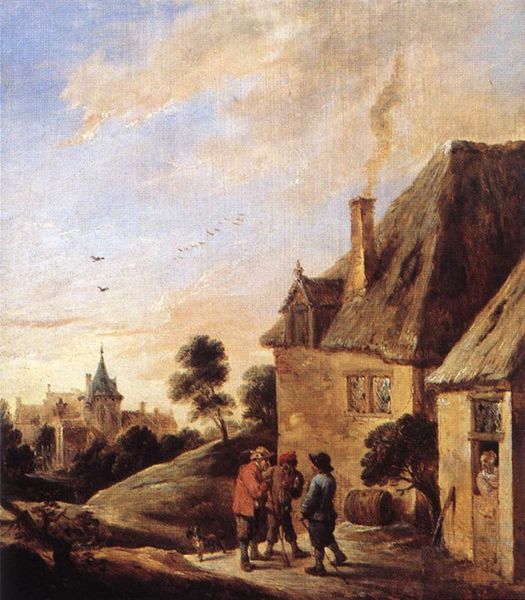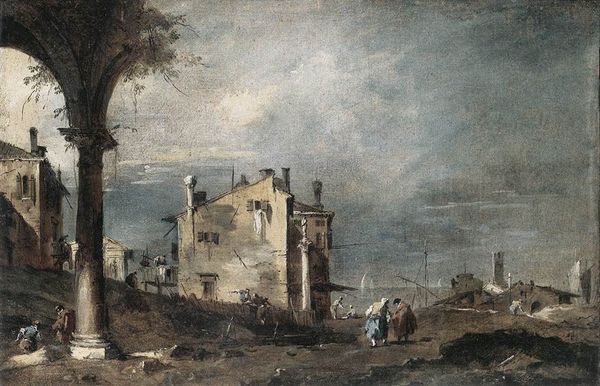
painting, oil-paint, architecture
#
baroque
#
painting
#
oil-paint
#
landscape
#
figuration
#
oil painting
#
genre-painting
#
architecture
#
realism
Copyright: Public domain
Curator: Welcome! We're looking at "Village Scene," a painting attributed to David Teniers the Younger. Teniers, a Flemish artist, excelled in genre paintings. These often provided glimpses into everyday life, but also subtly reinforced the social and moral values of the time. Editor: My eye is drawn immediately to the building dominating the foreground. The light on its thatched roof and roughly textured walls create a striking contrast against the more atmospheric landscape. There’s a deliberate flatness, almost a diagrammatic quality, to that architecture. Curator: Precisely! It's placed centrally to provide context. Note how Teniers incorporates architecture, rural activities and village figures, referencing the commoner's reliance on local industries. This echoes similar themes prevalent in Dutch Golden Age art. It also speaks to Teniers’ career within court circles where paintings offered not just aesthetics, but insights into broader Flemish societal structures. Editor: The composition divides the space nicely, though. We see the darker earthy tones in the immediate foreground giving way to lighter hues toward the horizon line, creating a sense of depth. And the artist very carefully employed techniques in layering the paint; observe the sky’s luminous quality and how it contrasts so starkly with the browns used to render the architecture. Curator: Indeed, that visual arrangement served didactic purposes. The distant church—notice how it sits right atop the central peak and is not the village tavern?– served as a reminder of community values amidst the depiction of everyday life, possibly commenting on moderation, good order and a subtle suggestion against too much carousing. Editor: A playful element can’t be overlooked. Look at the lively activity around the building, from the socializing men to the adorable, tiny dog bounding about; Teniers created a compelling dynamic by using these figurative details that introduce movement, in a painting whose subject runs the risk of stillness. Curator: These paintings served purposes, as social records, statements and messages circulated within specific audiences. They continue to hold worth when appreciated in this light. Editor: Ultimately, "Village Scene" succeeds by weaving a tapestry of details to produce not just a coherent picture, but also a compellingly immersive environment.
Comments
No comments
Be the first to comment and join the conversation on the ultimate creative platform.
